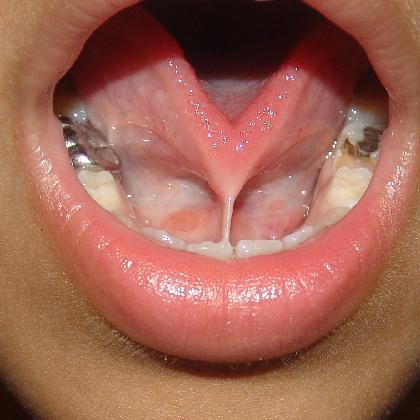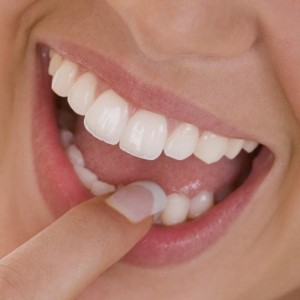If you have less than normal amount of saliva, you are having xerostomia. It is the dryness of the mouth which is a clinical manifestation os salivary gland dysfunction.
Category Archives: Oral Care
How to Clean and Sterilize Dental Instruments Part 1
Elimination of cross-infection is a major responsibility for all health care workers. In dentistry it is achieved by employing disposable items and ensuring that all non-disposable instruments are properly cleaned before being sterilized, preferably by autoclaving. The CDC Guidelines for Infection Control in Dental Health Care Settings—2003 are the standard of care for infection control in dentistry. Continue reading
How to Root Canal a Baby Teeth
The purpose of root canal treatment with baby teeth is to keep the teeth in function until exfoliation, or at least for as long as they are important for occlusal development. Besides eating and speaking, many parents do not know that baby teeth (or primary teeth) also act as a guide for the underlying permanent teeth to erupt and at the same time they maintain the space on the arch so that the permanent teeth has enough room to grow when it is out. Continue reading
Increased saliva in your mouth?
An increased salivary secretion in termed as sialorrhea or ptyalism.Â
Mechanisms
- The secretory innervation of the salivary glands is primarily under the control of the parasympathetic nervous system.
- Stimulation of the parasympathetic system causes profuse secretion of watery saliva.
- Some person are unable to swallow their saliva fast enough to prevent drooling
What causes dry mouth and how to overcome it
 Dry mouth is also known as xerostomia. Xerostomia is not a disease but a subjective complain of oral dryness resulting from reduced saliva flow. However, dry mouth can be associated with certain medical conditions such as diabetes , sjogren syndrome and etc. Â This is why you should not ignore and get a professional consultation if you are suspecting that you are suffering from dry mouth.
Dry mouth is also known as xerostomia. Xerostomia is not a disease but a subjective complain of oral dryness resulting from reduced saliva flow. However, dry mouth can be associated with certain medical conditions such as diabetes , sjogren syndrome and etc. Â This is why you should not ignore and get a professional consultation if you are suspecting that you are suffering from dry mouth.
Tongue Tie? Unable to speak Properly? Find Out Why And How to Correct It.
 Tongue-tie is also known as Ankyloglossia. It is a condition in which the lingual frenulum is either too short or forwardly placed limiting the movement of the tongue. Reports of partial tongue-tie affecting several generations., suggest a possible genetic basis for the minor variation in the attachment of genioglossus muscle. It may be traumatic or congenital.
Tongue-tie is also known as Ankyloglossia. It is a condition in which the lingual frenulum is either too short or forwardly placed limiting the movement of the tongue. Reports of partial tongue-tie affecting several generations., suggest a possible genetic basis for the minor variation in the attachment of genioglossus muscle. It may be traumatic or congenital.
Ingredients of Dental Fillings
When you get a tooth filling done at your dentist, do you not wonder about the ingredients of the dental filling he/she is putting into your mouth? Each dental filling has its own composition and the deciding factors for the type of dental filling you will get are the size of the cavity filling or condition of the tooth, dental filling cost and the availability of the material in the dental office. Continue reading
How to Motivate Your Kids to Brush Their Teeth
Until your kids are about 6 years old, you will probably have to brush their teeth for them. After that, though, it will be up to them to do it on their own. Teaching kids to brush their teeth is not always an easy part of parenting, but it’s something that must be done.
If you have a hard time getting your kids to brush their teeth, empower and inspire them to take “ownership†of their dental hygiene responsibility, by creating their very own dental hygiene kit with them. Continue reading
How to Determine if a Filling is Needed
Our teeth are constantly being attacked by acid produced by plaque bacteria as well as by the acidic foods and drinks we consumed. Acids cause damage below the tooth surface, causing microscopic holes in the tooth. If the acid damage continues over a period of time, the tooth becomes so fragile that a hole or pitting becomes visible in the tooth. As the hole gets bigger, the tooth will need a filling. Continue reading
Dry mouth reasons and remedies
Saliva has many different functions; to name a few, digestion, lubrication, to help you taste food, to protect your teeth from tooth decay, helping you swallow food, and protection your mouth from infection. It is produced by the many salivary glands in out mouth. There are 3 pairs of major salivary glands (the parotid glands, the submandibular glands and the sublingual glands, one of each on each side of the face) and over 600 minor salivary glands. These glands are connected by a duct and open into the mouth via small orifices. Sometimes we take saliva for granted such that we don’t realize how important it is until we’ve lost it. A normal person produces 4-6 cups of saliva daily. If the production decreases, he or she will have symptoms of “dry mouthâ€, or “xerostomiaâ€, resulting in a great discomfort and inconvenience. It is a common phenomenon especially among middle aged and elderly women.





